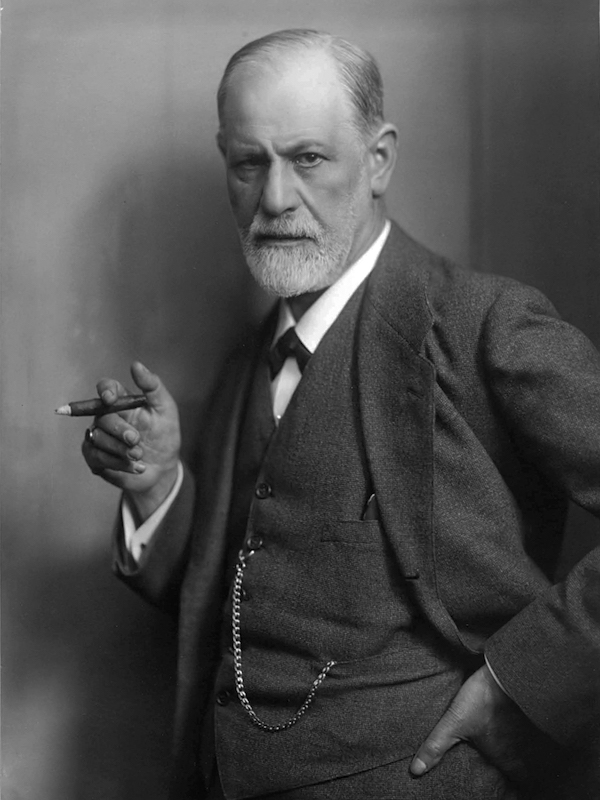Who Was Sigmund Freud?
Episode #1 of the course The theories of Sigmund Freud by Psychology Insights Online
A warm welcome to this course on the life and theories of Sigmund Freud! We are Psychology Insights Online. A team of Ph.D. level researchers, psychologists, and professors who are dedicated to sharing our knowledge of psychology with the public. Without a doubt, Sigmund Freud is one of the most fascinating and polarizing figures of the 20th century.
If I were to ask you to name three famous psychologists, which ones would you pick? Freud would probably appear on the lists of most (if not all) people asked. Technically, Freud wasn’t a psychologist in the contemporary sense, but as the founder of psychoanalysis, Freud forever altered the course of psychology and the treatment of mental health disorders.
Sigmund Freud was born into a Jewish family in 1856 in the city of Freiburg, in what is now the Czech Republic. Not long after, when he was four years old, his family relocated to Vienna, Austria. Freud’s father was a wool merchant by trade and his mother was 20 years his junior. Together, they had eight children, with Sigmund being the oldest.
Financially, the family often struggled, and Freud would later attribute his own anxiety over money to these early years. Freud was raised within the Jewish heritage; however, the family was not devoutly religious. Instead, Freud’s father encouraged him to be a free thinker and to embrace intellectual pursuits. Freud had a complicated relationship with his father but said his mother was very loving toward him. The dynamics of these relationships influenced his later theories on sexual conflicts in development, a topic that will be covered in a later lesson.
As a young Jewish man in Austria at that time, Freud was limited to choosing between a career in medicine or law. While he chose medicine, he was actually more passionate about becoming a scientist. For several years, he studied physiology and had plans to pursue a career in conducting basic research. Eventually, financial pressures forced Freud to abandon those aspirations, and he instead finished his medical degree and took up a clinical practice.
 Sigmund Freud by Max Halberstadt, c. 1921
Sigmund Freud by Max Halberstadt, c. 1921
In 1886, Freud married Martha Bernays, with whom he would eventually have six children. That same year, he also set up his private medical practice in Vienna. He specialized in the treatment of nervous disorders, with his patients commonly being young and middle-aged women presenting with hysteria, described as the physical manifestation of symptoms such as the paralysis of limbs without a direct neurological cause. According to Freud, hysteria primarily occurred in women and resulted from unconscious forces.
Today, hysteria is no longer considered a formal psychiatric diagnosis, but instead resembles a set of conditions known as “conversion disorders.” Sigmund Freud was a prolific writer. Some of his best-known books included “Studies on Hysteria,” “The Interpretation of Dreams,” and “Three Essays on the Theory of Sexuality,” among many others. In these works, Freud described how the unconscious and early childhood experiences shaped the development and the psyche of his patients.
Following the Nazi annexation of Austria in 1938, Freud, his wife, and their daughter Anna (also a renowned psychoanalyst) fled to London, England. A long-time habitual smoker, Freud smoked over 20 cigars per day and eventually contracted oral cancer. After a long battle with the disease, he passed away at age 83 in 1939. His final home in London became the Freud Museum London in 1986.
Today’s task: Throughout this course, I will end each lesson by recommending a daily task. These exercises will help you become more engaged with the material and ultimately deepen your understanding of it. In today’s task, take a couple of minutes to think about your own perceptions of Freud. Even better, also ask a friend of their impressions of Freud. Try to remember these initial impressions to see if anything changes as you progress through this course.
In tomorrow’s lesson, I will start by discussing what could be Freud’s most important contribution, the unconscious mind.
See you tomorrow!
Recommended book
Freud: A Life for Our Time by Peter Gay
Share with friends

